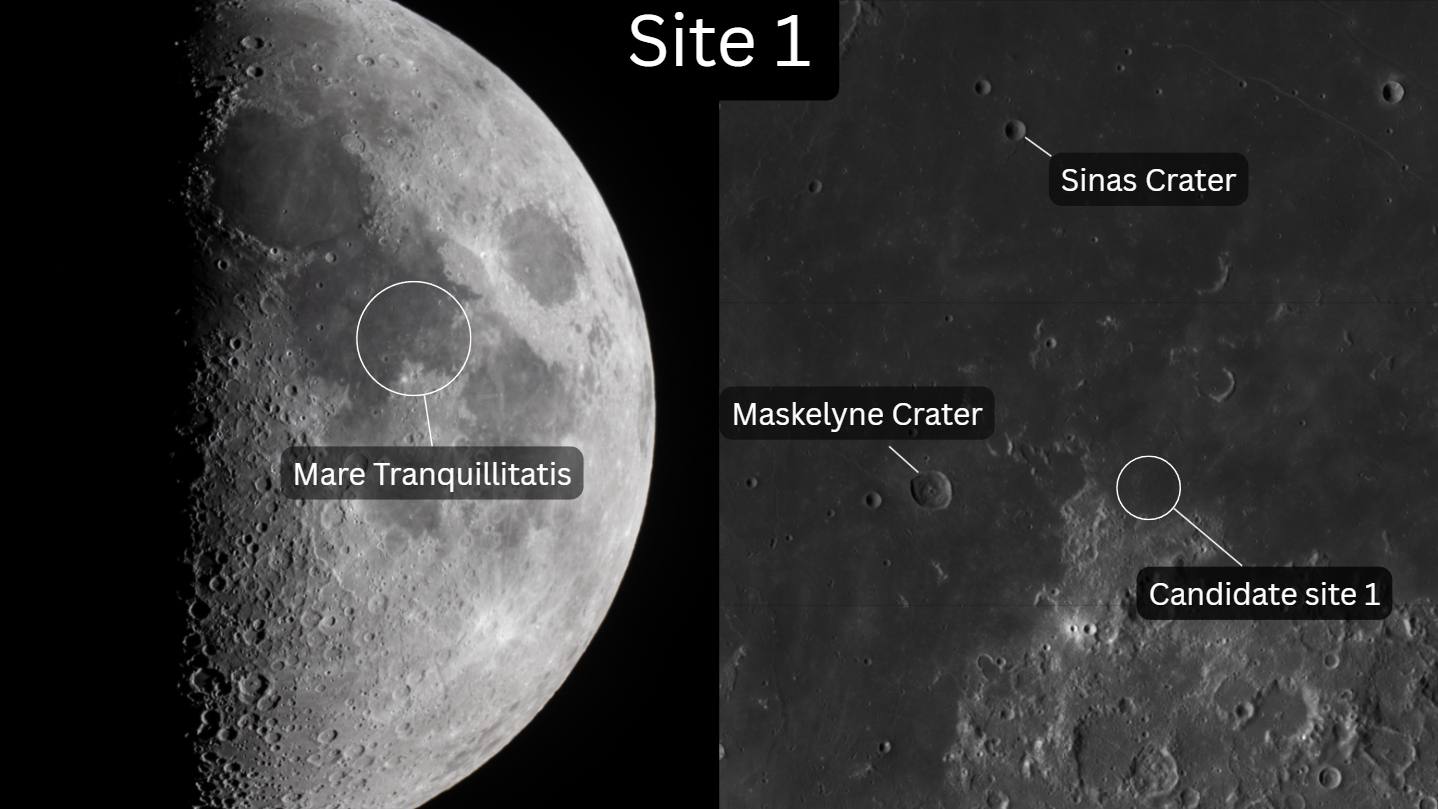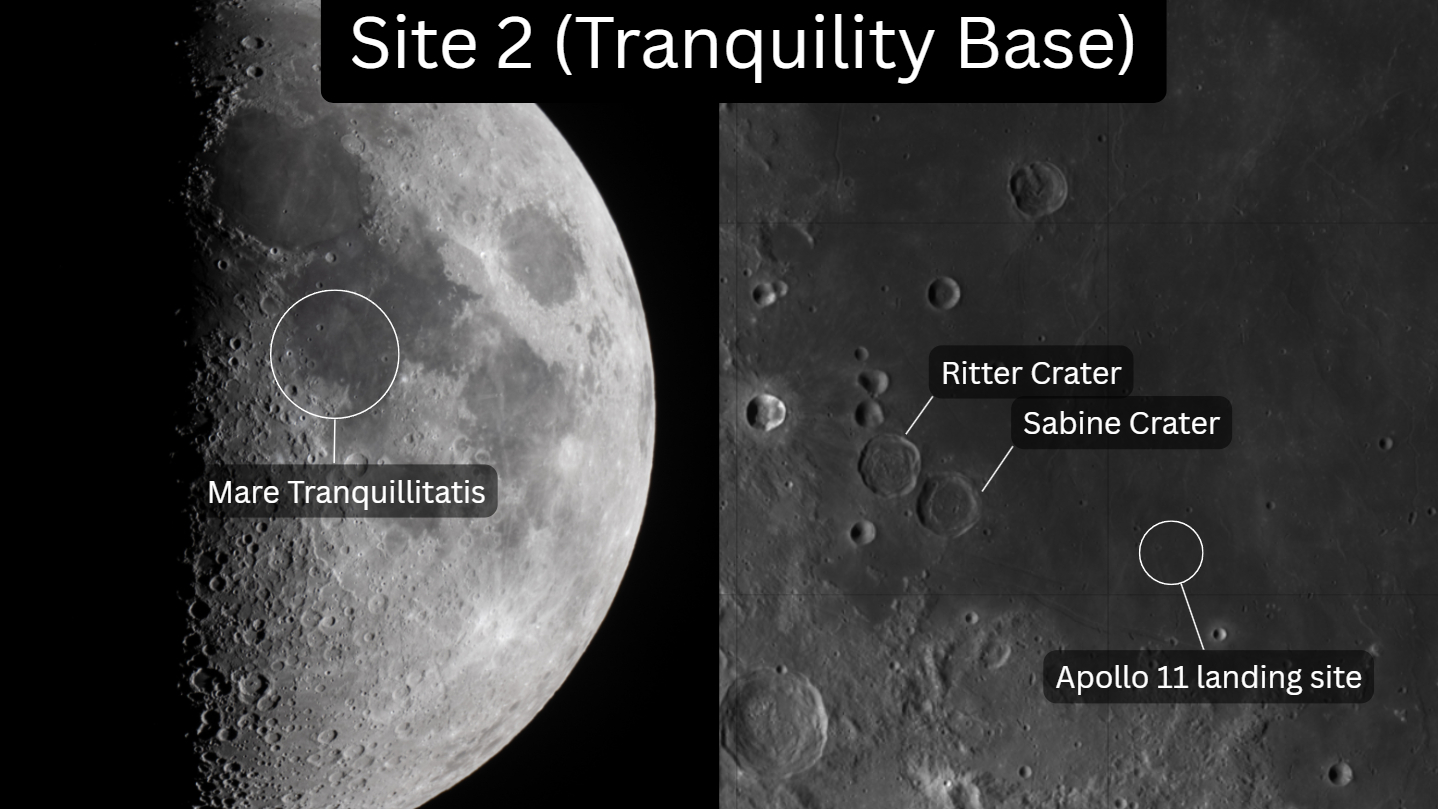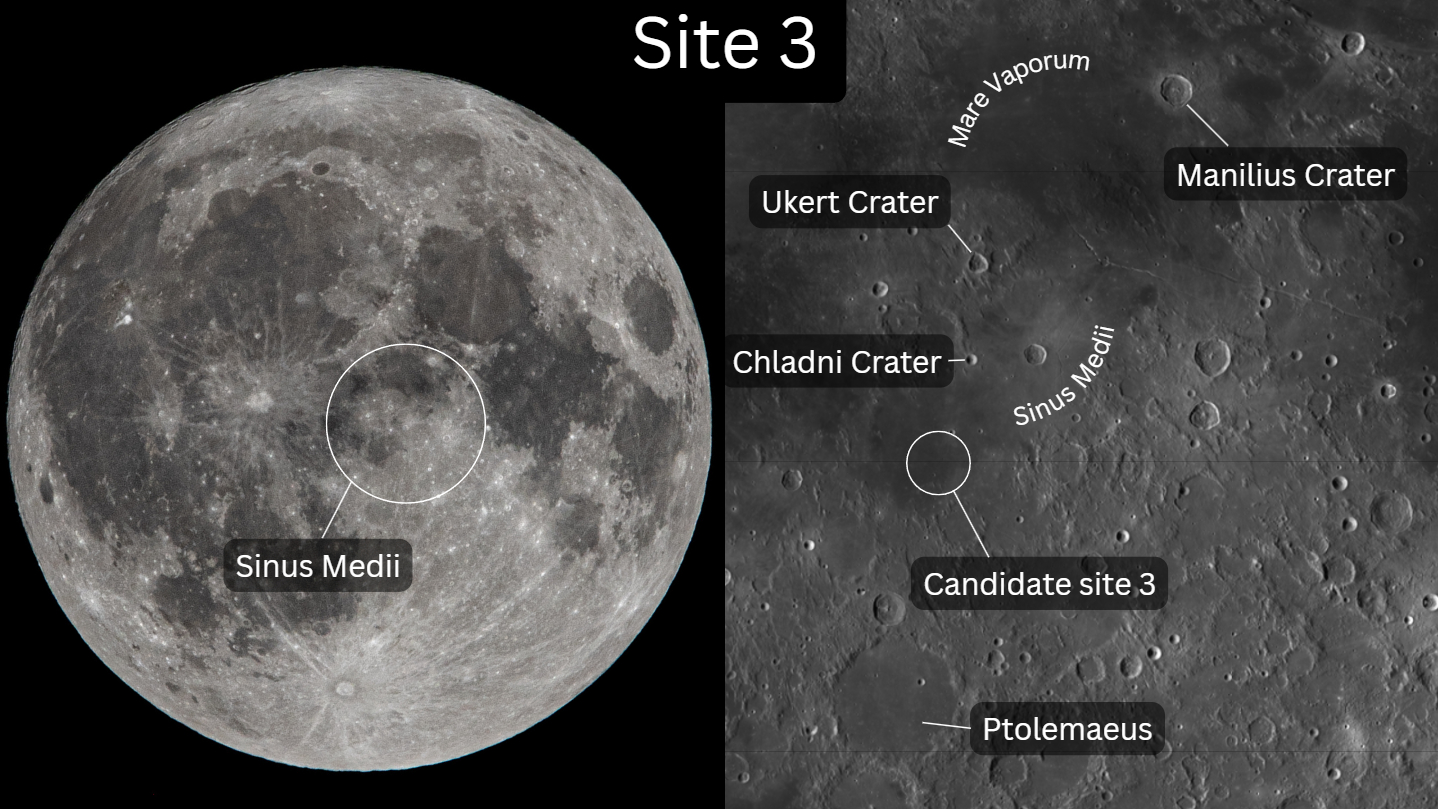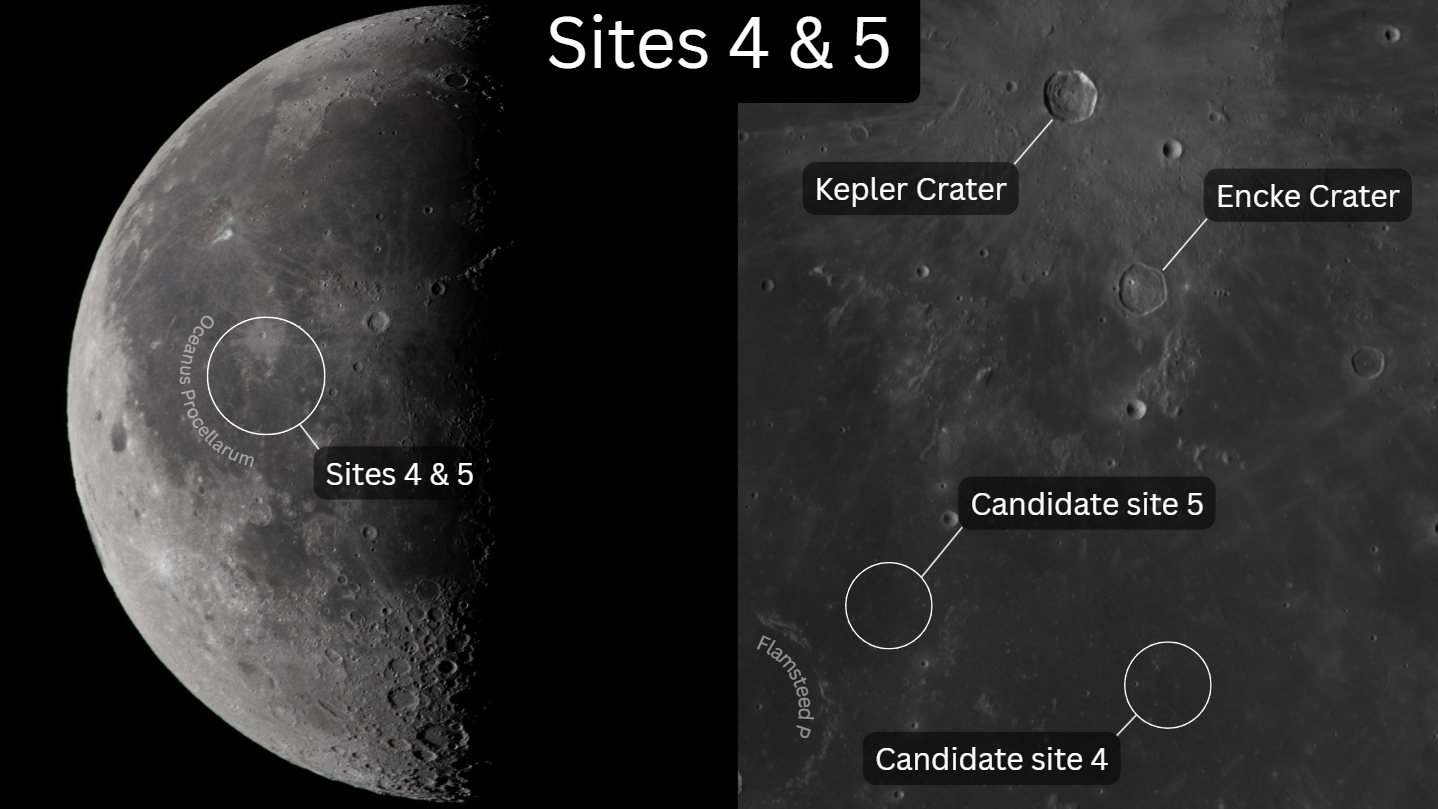Discover where the Eagle might have landed: How to find Apollo 11's backup sites on the moon
Find the locations of the five landing zones considered as the setting for humanity's first steps on another world.
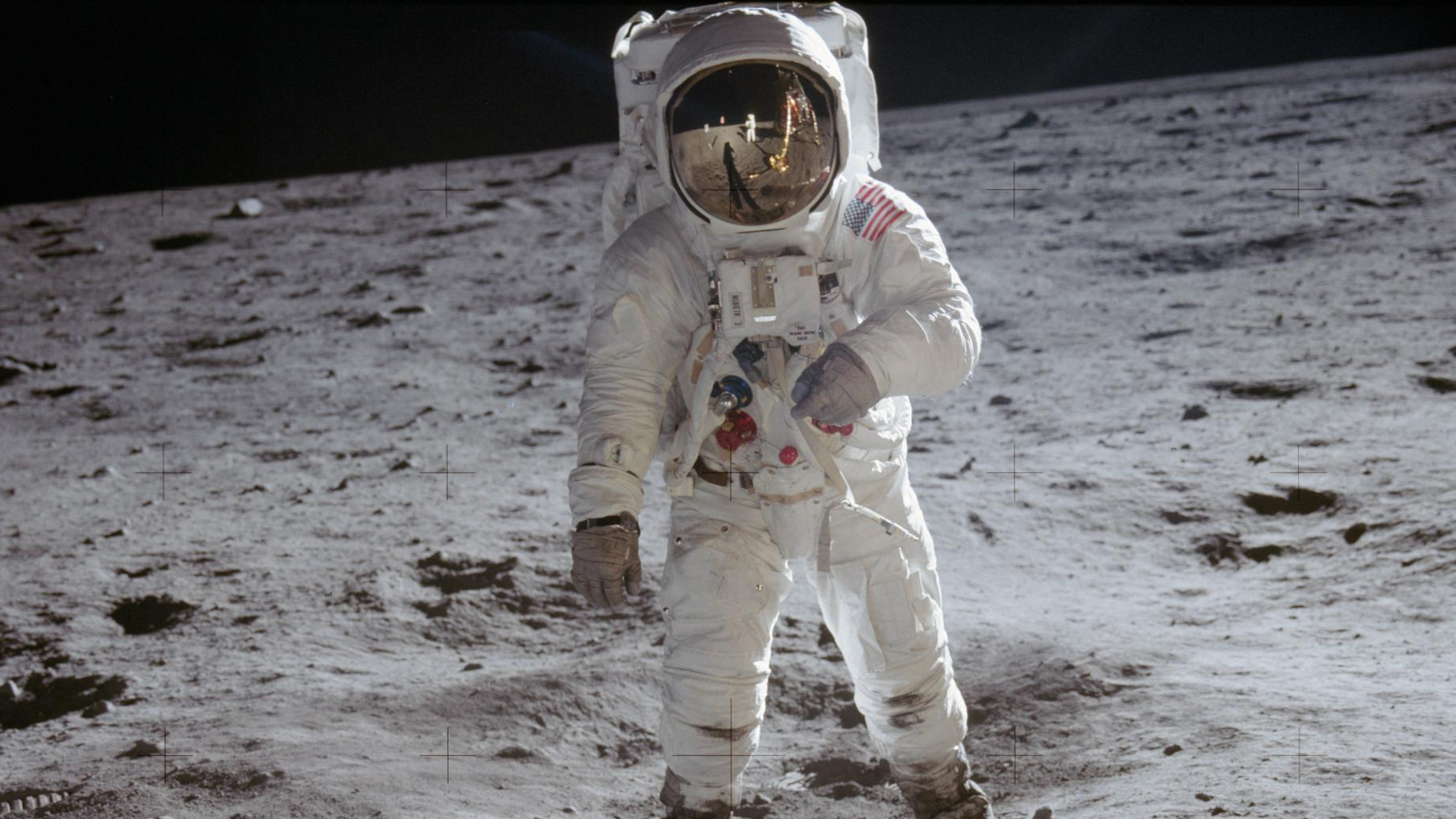
On July 20, 1969, Apollo 11 astronaut Neil Armstrong announced his historic arrival on the ancient lava plain of Mare Tranquillitatis with the following message to NASA: "Houston, Tranquility Base here, the Eagle has landed."
Armstrong's words, spoken less than seven hours before he and fellow NASA astronaut Edwin "Buzz" Aldrin took humanity's first steps on the surface of another world, marked a watershed moment in human history. However, the now famous phrase could easily have been uttered from the opposite side of the lunar disk from Tranquility Base.
In February 1968, NASA's Apollo Site Selection Board revealed five potential landing sites for Apollo 11 — whittled down from a list of 30 — including two that were on the opposite side of the lunar disk from Tranquility base, in Oceanus Procellarum (the Ocean of Storms).
Each of the 3-by-5-mile (5-by-8-kilometer) landing zones were subject to intensive orbital imaging and were ultimately selected based on a number of diverse criteria. For example, each site had to be located within 5 degrees of the lunar equator in order to expend the least amount of fuel and have no large hills or deep craters along the lander's approach, which could have confused its landing radar. Each site also had to have a slope of less than 2 degrees, with relatively few craters and excellent lighting during the selected landing windows.
Site 2 in the Sea of Tranquility was eventually selected as the prime landing site, while two of the remaining shortlisted zones were designated as contingency landing zones to be targeted should the launch of Apollo 11's gigantic Saturn V rocket be delayed.
Read on to discover the locations of the five landing zones considered as the setting for humanity's first steps on another world. The general lunar region containing each site can be found easily with the naked eye during the correct moon phases, but we've also included a more precise map for those observing the moon through a telescope. A 6-inch scope will allow you to spot the larger craters needed to hone in on the locations of the candidate sites. Happy hunting!
Candidate Site 1 —Mare Tranquillitatis (34° East, 2°40" North)
The first shortlisted site for the Apollo 11 landing can be found on the southern shore of the Sea of Tranquility and is best viewed as the moon approaches its first quarter moon phase, or during the full moon, when the entirety of the lunar surface is lit from the perspective of Earth.
Breaking space news, the latest updates on rocket launches, skywatching events and more!
First, locate the dark expanse of the Sea of Tranquility (Mare Tranquillitatis) located slightly above the lunar equator in the eastern region of the lunar surface. If you struggle, simply take a look at the graphic below! This lunar feature is an enormous basaltic plain, which formed billions of years ago when lava flows flooded gigantic impact basins, before hardening in the frigid space environment.
The Sea of Tranquility is large enough to be seen easily with the unaided eye. Using a telescope, you can also locate the prominent Maskelyne Crater (shown below) and draw an imaginary line east until you hit a brighter patch of terrain jutting up from the south. Apollo 11's first candidate landing zone can be found in the patch of lunar mare bordering this outcrop to the east.
Candidate Site 2 —Tranquility Base (23°37" East, 0°45" North)
Tranquility Base, the site of Apollo 11's historic 1969 landing — can be found to the southwest of the Sea of Tranquility and, like its predecessor, is best viewed in the buildup to the first quarter and full moon phases.
For a closer look, first find the tightly clustered Ritter and Sabine craters on the western edge of the lunar sea. Next, draw an imaginary line three times the width of the Sabine Crater from the lower edge of the impact site leading to the right. This will give you the approximate location of humanity's first footprints on another world.
Candidate Site 3 —Sinus Medii (1°20" West, 0°25" North)
Our third Apollo 11's landing site candidate is situated in the Sinus Medii region smack in the center of the Earth-facing lunar surface. The region containing the landing zone is almost equidistant between the northern edge of Ptolemaeus, and the smaller Ukert crater to the north is best viewed during the weeks straddling a full moon.
Sinus Medii would have been the site of the Apollo 11 landing had the mission's Saturn V launch been delayed by just two days from its historic date of July 16, 1969 to July 18.
Candidate Sites 4 & 5 —Oceanus Procellarum (36°25" West, 3°30" South, 41°40" West, 1°40" North)
Oceanus Procellarum plays host to the final two Apollo 11 landing zones considered in the runup to the historic mission, which are best viewed during the moon's third quarter, or full moon phases. Both can be found below the bright impact ejecta thrown out in the creation of the Kepler Crater to the north and to the right of the Flamsteep P formation.
Had the Apollo 11 Saturn V launch slipped to July 21 1969, then humanity's first steps on the moon would have been left in the regolith coating Oceanus Procellarum instead. 'Procellarum Base' just doesn't have the same ring to it, does it.
Editor's Note: If you capture the site of Apollo 11's shortlisted landing sites and want to share them with Space.com's readers, then please send your photo(s), comments, and your name and location to spacephotos@space.com.
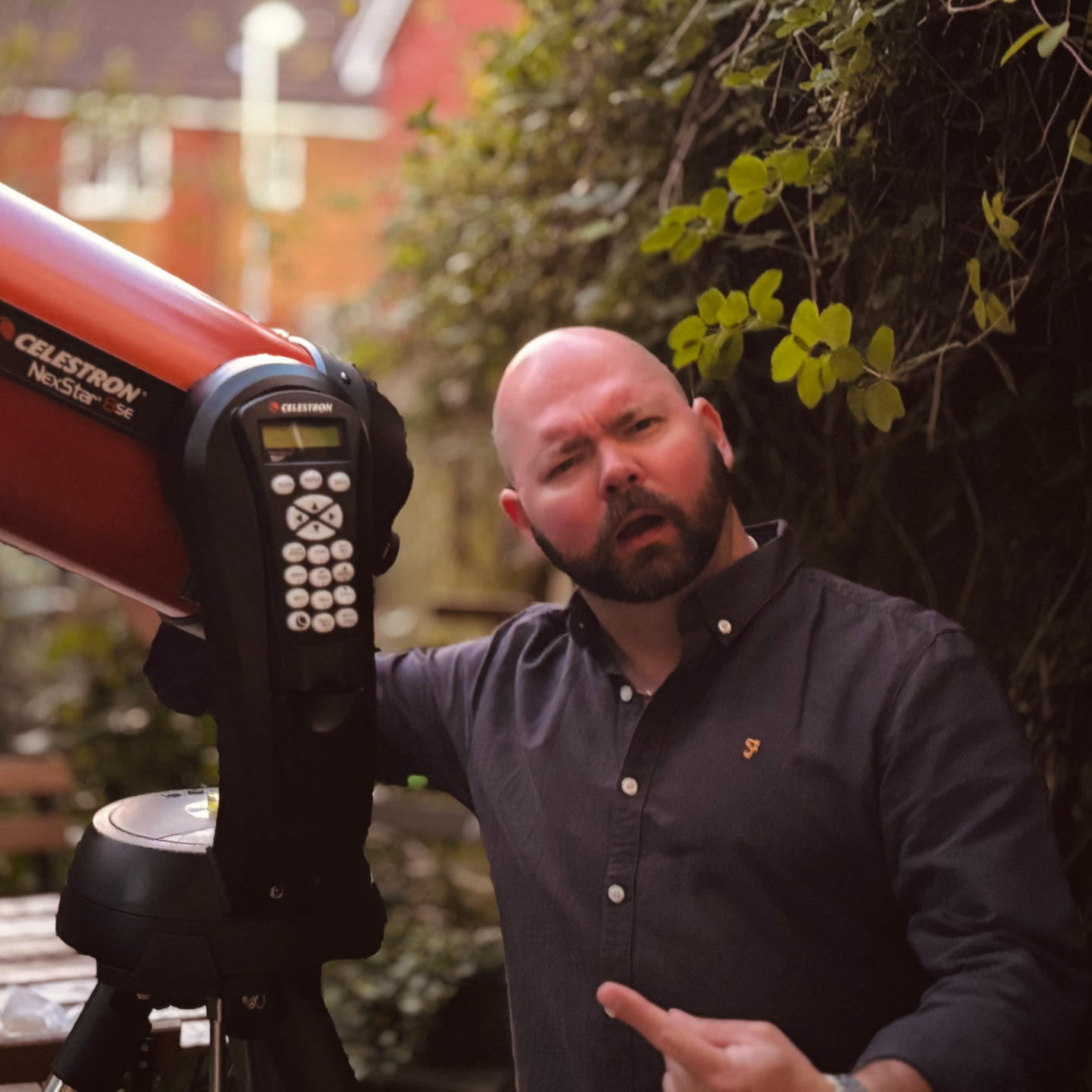
Anthony Wood joined Space.com in April 2025 after contributing articles to outlets including IGN, New Atlas and Gizmodo. He has a passion for the night sky, science, Hideo Kojima, and human space exploration, and can’t wait for the day when astronauts once again set foot on the moon.
You must confirm your public display name before commenting
Please logout and then login again, you will then be prompted to enter your display name.
